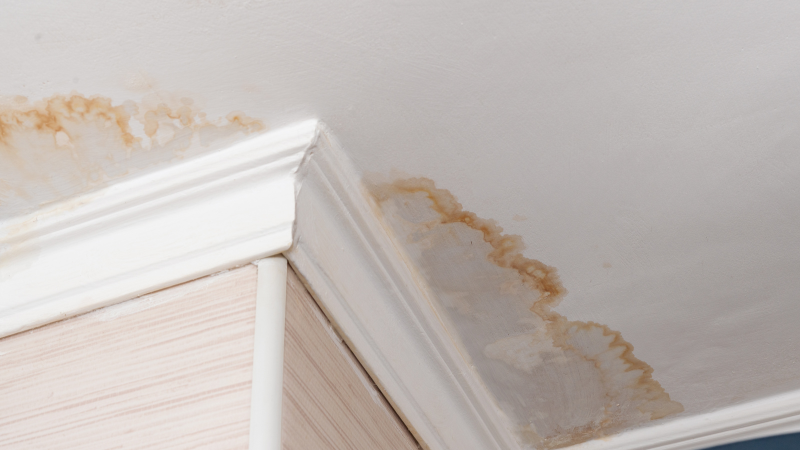Everyone will have their own unique idea in relation to Preventing Water Damage in the Bathroom.

The washroom is extremely vulnerable for moist build-up and also potential water damage because of the constant use water in it. This article offers easy evaluation methods to aid detecting water damage dangers.
The constant use water in the bathroom makes it incredibly prone for wet buildup and potential water damage. By inspecting it regularly, you can minimize water relevant problems.
The following set of evaluations is simple to do as well as must be done as soon as in every 3 months in order to maintain your shower room healthy and also to stop possible water problems brought on by the bath tub, the shower, pipeline joints and also plumbing, sinks, closets, and also the commode
Do not forget executing these assessments as well as be complete while executing them. Remember that these basic assessments can conserve you a lot of money by offering early indications for water damage
Tub as well as Shower
The shower as well as bathtub require special focus and also upkeep. Inspect the ceramic tiles as well as replace if cracked. Make sure that there is no missing out on cement between the ceramic tiles. Inspect and change split caulking at joints where the wall surfaces satisfy the floor or the bath tub. Obstructed drains pipes as well as pipes troubles will certainly stop the tub from drying and also might indicate serious troubles underneath the tub. Seek advice from a specialist right away to avoid structural damages. Focus on discolorations or soft locations around the tub walls as they might suggest an internal leakage.
Plumbing
Signs for water damages are hard to detect considering that many pipelines are set up inside the walls.
Pay unique interest to flooring and also walls dampness as well as stains as they may indicate an undetectable plumbing problem. Examine wetness degrees in adjoining rooms also.
Sinks and Cabinets
Sinks and also cupboards are revealed to wetness and humidity day-to-day as well as are usually ignored. Inspect on a regular basis under the sink as well as on the kitchen counter above it. Fix any drip in the catch as it may recommend drainpipe issues. Look around the sink, sluggish draining pipelines may show a blocked drainpipe. Replace sink seals if they are split or loose.
The Bathroom
The commode is a susceptible water joint. Check the water lines as well as search for leaks around the commode seat, in the hose pipe, and also under the water tank. If you discover any kind of indications of dampness on the floor around the bathroom, look for leaks in the toilet rim and also tank seals.
Understand that hanging bathroom dish deodorants boosts the opportunities for clogs.
Water Damage Signs In The Bathroom To Avoid Cleanup
Musty smell
This is one of the easiest signs to catch because musty smells are so odorous. The damp, earthy, moldy smell should be a big red flag. The smell will develop when moisture gets trapped in surfaces, and begins to facilitate mold growth. Leaking pipes under cabinets, inside walls, and behind shower fixtures will cause moisture to stay trapped and not dry, which will lead to mold growth and spread. As soon as you notice any musty smells in your bathroom, have it checked for hidden water damage and cleanup signs.
Visible mold
If the smell isn’t there to give it away, sometimes you will actually see mold growth. Finding mold in your bathroom is a serious problem, because mold is very harmful to your health. By the time mold growth is visible, it also means that water damage has already occurred and been present for some time. The only way the mold problem can be resolved is to find the source of the moisture and get it stopped. To safely and adequately remove mold, you need to have professionals handle the remediation. Do not waste any time in getting mold problems addressed, fixed, and sanitized so that you can protect you and your family from the many respiratory symptoms caused by mold exposure.
Damaged floors
Bathroom floors should be able to withstand some exposure to water while still remaining in good condition. However, when excess exposure or water leaks occur, they will begin to damage even the most water-resistant flooring. If you notice any cracking, bubbling, staining, or warping on your bathroom floors, there is probably a water leak somewhere causing the distortion. If you notice areas of the floor have become softer, or even have a spongy feeling, there is probably damage to the subfloor. Subflooring is typically made up of plywood. When plywood is exposed to water or moisture, it will absorb it. Once it has become saturated, the weight of the excess water will cause the wood to swell and soften. Check the floors in your bathroom frequently to catch any of these sings before they lead to damaged subflooring.
Changes on walls
When water leaks behind walls, it will cause changes in the drywall. Peeling plaster, blistering paint, and soggy wallpaper are all good indicators that excess water is building up behind the wall. Water leaking behind drywall will cause it to swell and be soft to the tough. If you start to notice gaps along the trim of your walls, or where tile meets the wall, it could also be a strong indicator that there is a leak behind the wall. Any changes, distortion, or damage on the walls should be evaluated as soon as you notice it to prevent further water damage and cleanup.

I was shown that article on How to Fix a Water Damage Bathroom through a friend on another web blog. Feel free to set aside a second to share this blog entry if you enjoyed it. Thank you for your time. Come back soon.
Book A Service Call